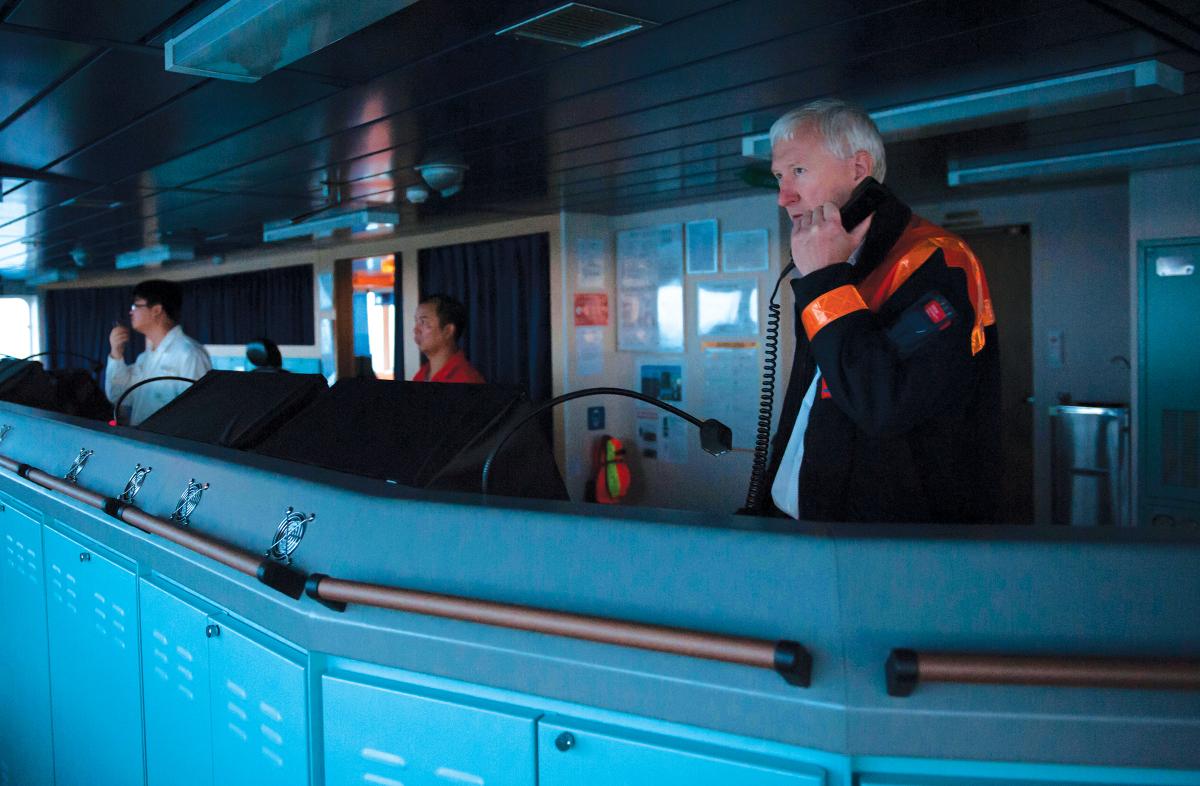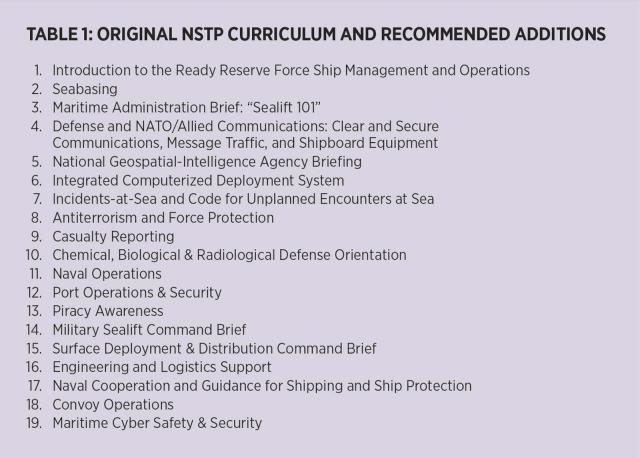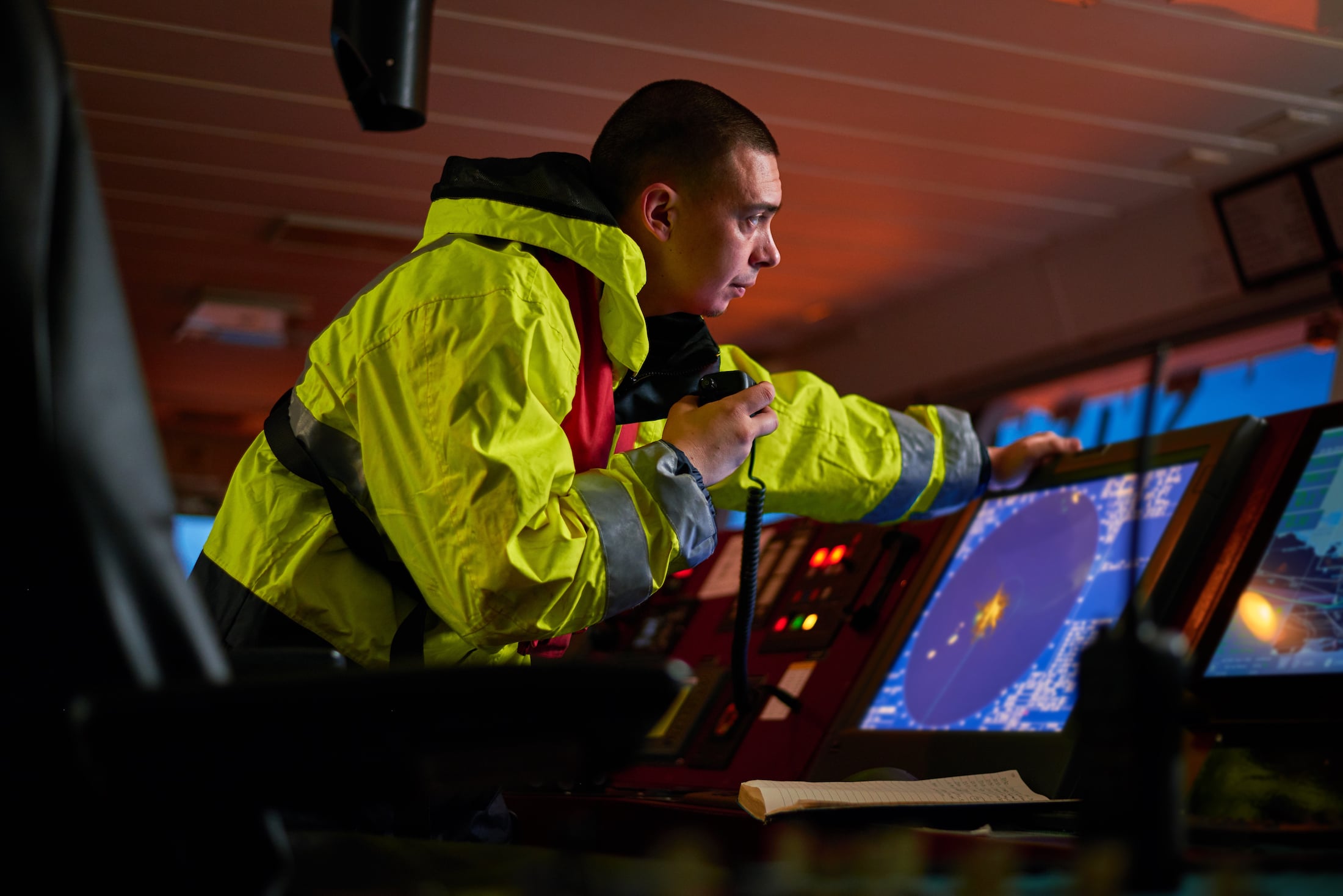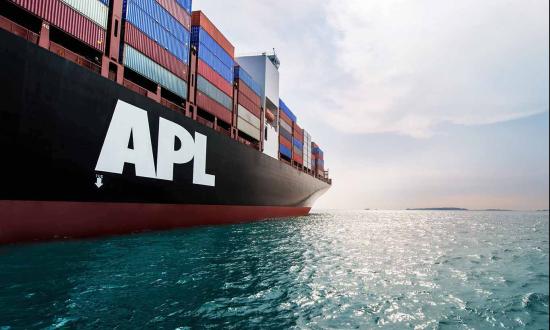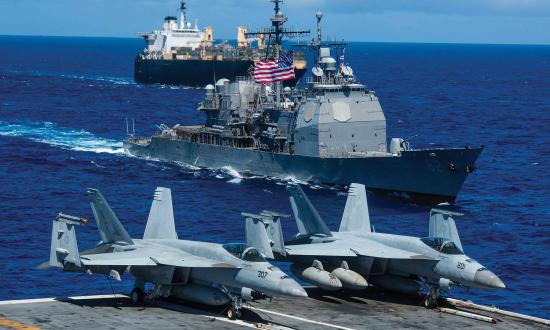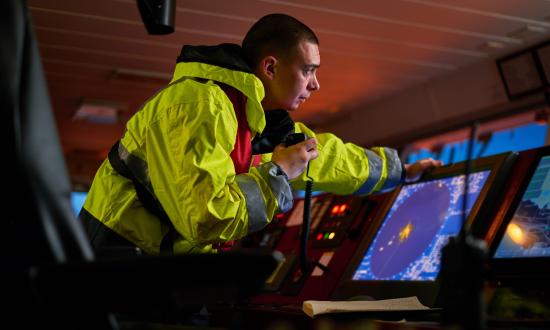In an 8 May 2019 editorial on gCaptain, Captain John Konrad, a Coast Guard–licensed mariner, said he is not prepared or trained for war. Despite his years of study, he asks, “How do I join a military convoy? How do I share information with Naval Intelligence? How do I contact a naval vessel on a secure line? How do I navigate a mine field? Will zig-zagging help me avoid modern submarines? What do I secure for radio silence? How do I darken ship to naval standards?”1
Were any of the potential flashpoints across the globe to flare up, the United States would require strategic sealift to support and sustain the military. Mariners would be needed to activate the ships and operate them in a contested environment, but as Brad Eastman argues in a recent article, “The mariners of today and even those being groomed for the future are largely unequipped to operate in this space.”2
In addition, senior naval leaders have stated that the U.S. Merchant Marine may have to go it alone during the next conflict. Maritime Administrator Rear Admiral Mark Buzby says the Navy has indicated it likely will not have enough ships to escort merchants: “It’s: ‘You’re on your own; go fast, stay quiet.’”3 This requires training to operate in a contested environment, sail into a port, offload personnel and cargoes, and get out.
It is essential that today’s mariners have the proper tools to keep the ever-decreasing number of sealift vessels afloat and continue the flow of logistics when called on. It is time to bring back the National Sealift Training Program (NSTP).
From NSTP to TacAd
Until 2012, the Maritime Administration sponsored the National Sealift Training Program, a two-week course at the Global Maritime and Training School (GMATS) on the campus of the U.S. Merchant Marine Academy. Designed for both senior deck and engineering officers of the Merchant Marine, the course drew on lessons learned from World Wars I and II, 9/11, Operations Desert Shield/Storm, Uphold Democracy, and Restore Hope and included integrating naval communications, maritime security, and sealift readiness training. Unfortunately, it ceased when GMATS was closed.
In its absence, the Military Sealift Command is developing the Tactical Advisor (TacAd) program. Individuals are drawn predominantly from the strategic sealift and surface warfare reservist communities and trained in basic naval tactics and communications. TacAds are out there today serving as liaison officers on board civilian merchant vessels, assisting the ships to execute naval objectives and communicate within the naval composite warfare commander construct. As their tactical knowledge base increases, TacAds will be key to success. Demand for the program will only grow as these ships continue operating forward providing logistics in contested environments.
The TacAd program is a positive step, but using qualified strategic sealift officers as tactical advisors could exacerbate the current mariner shortage by keeping them from serving as licensed officers on board Ready Reserve Force vessels. All merchant mariners who would carry defense cargoes during a contingency should be trained.
Bring Back the NSTP
A revitalized two-week NSTP should train Merchant Marine officers in the Maritime Security Program and Voluntary Intermodal Sealift Agreement (VISA) Program and Navy reservists in the Strategic Sealift Program. The Merchant Marine Act of 1936, as amended, authorizes the Maritime Administration to train deck and engine officers in maritime defense and intermodal freight transportation. To meet the challenges of today’s environment, the NSTP also should include naval cooperation and guidance for shipping (NCAGS), convoy operations and communications, and maritime security. This additional training will give officers the knowledge to operate ships either independently or as a fleet, including with NATO/allied vessels, during a national contingency.
- NCAGS. NCAGS is a force multiplier. It allows U.S. combatants as well as strategic sealift vessels to capitalize on the resources of friends and allies to better understand the maritime picture, including threat recognition, and safely maneuver.
- Convoy Operations. In World Wars I and II, naval support of convoy operations was vital to strategic sealift. Since it is likely that logistics ships will not have adequate naval protection, the convoy system must be embraced as a way to support the Navy’s distributed maritime operations during a contingency. It takes training and practice for a mariner to understand how to operate and communicate with a convoy, including threat detection. In addition, putting theory to practice would be beneficial. Simulators could be used, but the best training would be under way with other ships maneuvering within a convoy, particularly upon identifying an active threat.
- Maritime Cyber. Today’s merchant ships have become more automated and increasingly connected to networks and the internet. GPS, radar, electronic charts, autopilot, communications, gyro compass, and automatic identification systems once independent are now connected with a ship’s software systems, networks, and the internet. These systems are highly vulnerable to malicious attacks in routine operations, let alone during a national security situation. Cyber attacks could easily render a ship and its crew unseaworthy. Despite these concerns, there is little being done to ensure today’s vessels are “cyber seaworthy.” It is important for owners, operators, and ships’ crews to be able to detect, identify, and repair cyber casualties.
The Maritime Administration could restart the NSTP at a training facility in a fleet concentration area such as Norfolk or San Diego. Norfolk is ideal as it is the home of Commander, Navy Reserve Force Command, where most reservists in the Individual Ready Reserve force train. Military Sealift Command is also headquartered at Norfolk, with many ships likely to visit during NSTP, including Ready Reserve Force vessels.
A Way Forward
For the past several decades, U.S. forces have enjoyed unfettered freedom of navigation and control of the sea. In the event of a national crisis or contingency, U.S. forces will require sustainment of logistics using the nation’s strategic sealift capabilities with skilled mariners at the helm. These mariners require critical training to operate in a “contested environment.”
At last year’s National Maritime Day celebration in Washington, D.C., Secretary of Transportation Elaine Chao highlighted the importance of the Merchant Marine: “Throughout history, one thing remains constant; the absolutely critical role that the U.S.-flag merchant marine vessels play in our economic and national security. With advancements in technology, our mariners have to learn more than ever before, but they have been up to the challenge.”
These words have never been more relevant. As follow-on training for mariners, the National Sealift Training Program is an imperative. As they put their ships in harm’s way, training will help prepare mariners for the fight and live up to their motto, “We Deliver!”
1. John Konrad, “Admiral, I Am NOT Ready for War,” gCaptain, 8 May 2019, https://gcaptain.com/editorial-admiral-i-am-not-ready-for-war/.
2. LCDR Bradford Eastman, USN, Strategic Sealift Officer Force, “What Is the True Maritime Deficiency that Plagues DOD Readiness?” Defense Transportation Journal, 1 February 2019, www.ndtahq.com/what-is-the-true-maritime-deficiency-that-plagues-dod-readiness/.
3. David B. Larter, “‘You’re on Your Own’: U.S. Sealift Can’t Count on Navy Escorts in the Next Big War,” Defense News, 10 October 2018.



